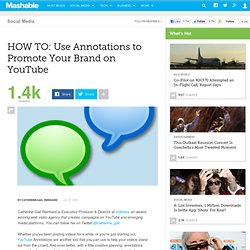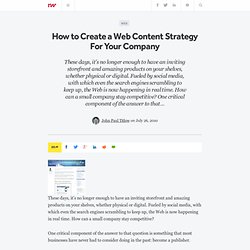

HOW TO: Manage a Sustainable Online Community. Rob Howard is the CTO/founder of enterprise collaboration software company Telligent.

A 2008 Gartner study on social software noted that “about 70 percent of the community typically fails to coalesce.” While the measurement and the statistics behind this statement raise questions, there is an element of truth. There are detrimental effects of over-hyping the technology and then committing the three cardinal sins of running a community: If you build it they will come. This is probably the best known online community fallacy. All three can cause a community to fail, and there are plenty of examples.
Understanding the Community Life Cycle The image below is representative of the different stages of the community life cycle. A community is constantly in one or more of the following states with the exception of the On-Board state: How Is Value Perceived? It is important to note that Metcalfe’s law was created to describe telephone and facsimile networks. A great case study here is Twitter. Why You Need to Monitor and Measure Your Brand on Social Media. Maria Ogneva is the Director of Social Media at Attensity, a social media engagement and voice-of-customer platform that helps the social enterprise serve and collaborate with the social customer.

You can follow her on Twitter at @themaria or @attensity360, or find her musings on her personal blog and her company's blog. Whether you are actively developing a social media presence for your brand or just dipping your toe in the deep and ever-changing ocean of social media chatter, you probably realize that monitoring and measurement are quite important. Although there is no shortage of social media monitoring tools, each one is a bit different in its approach, methodology, metrics, depth of analysis, channels measured, reports and UI. The existence of this many tools and the fragmentation of the tools market is evidence of the fact that the space is not quite mature, and doesn't yet have a set of agreed-upon metrics and best practices. HOW TO: Use Annotations to Promote Your Brand on YouTube. Catherine-Gail Reinhard is Executive Producer & Director at Videasa, an award-winning web video agency that creates campaigns on YouTube and emerging media platforms.

You can follow her on Twitter @catherine_gail. Whether you’ve been posting videos for a while, or you’re just starting out, YouTube Annotations are another tool that you can use to help your videos stand out from the crowd. And even better, with a little creative planning, annotations can add a dimension of interactivity and entertainment to your videos that audiences will appreciate. There are plenty of ways to use annotations, from adding a simple "Call To Action" that asks the audience to subscribe or do something after watching the video, to creating a series of videos that are linked via annotations into an interactive game.
This isn’t to say that annotations aren’t without limitations. Annotations 101 Now if you're a YouTube newbie, you might be asking, what exactly are YouTube Annotations? How to Create a Web Content Strategy For Your Company. These days, it's no longer enough to have an inviting storefront and amazing products on your shelves, whether physical or digital.

Fueled by social media, with which even the search engines scrambling to keep up, the Web is now happening in real time. How can a small company stay competitive? One critical component of the answer to that question is something that most businesses have never had to consider doing in the past: become a publisher. Your Site Needs a Blog Having somebody design and build your website is only half the battle. When you first start out, your company blog should be set up as a subdirectory (www.company.com/blog) rather than a subdomain (blog.company.com). From a design standpoint, the blog should be visually consistent with the rest of your site, at least as far as the header and navigation are concerned. While you're at it, it's worth considering moving the rest of your site onto the CMS as well to make updating that content easier. Not a Writer? Campaign Monitor.